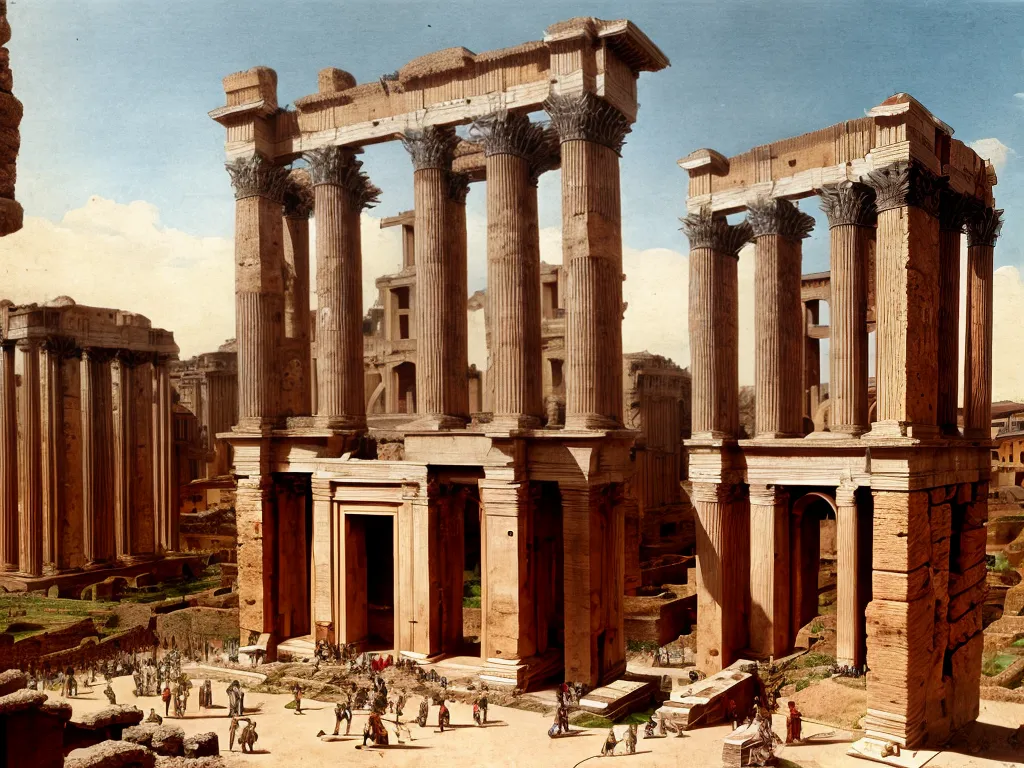
How Electricity Was Distributed in Ancient Rome
Introduction
Rome was one of the most advanced civilizations of the ancient world, and the Romans developed complex systems to distribute resources like water and food across their vast empire. Electricity, of course, was unknown in ancient times, but the Romans did find ingenious ways to distribute power by utilizing mechanical technologies like aqueducts, mills, and block and tackle pulley systems. In this article, I will provide an in-depth look at how the Romans distributed power and compare their technologies to the electrical grid systems we rely on today.
Water Systems Powered Industry and Cities
The Romans are well known for building aqueducts to bring fresh water from distant sources into cities and settlements across the empire. These impressive bridges and pipelines relied on gravity to keep water flowing downhill for miles. The water transported by aqueducts was essential for Roman cities, providing drinking water and supplies for activities like bathing, fountains, and sewers.
But aqueducts also indirectly helped distribute power by providing water to operate Roman mills and mining operations. The Romans built water mills that used water wheels turned by aqueduct flows to grind grain into flour. They also used water to power trip-hammers for forging iron and sequence pumps for draining floodwaters from mines.
So while aqueducts distributed water, they also allowed mechanical power derived from falling water to be utilized far from the water source. This distributed power helped drive industry and food processing in Roman cities in a manner similar to how an electrical grid transmits energy today.
Networks of Mills Distributed Power
In addition to water mills directly fed by aqueducts, the Romans also built sophisticated networks of mills powered by free-flowing rivers and streams across the empire. These mills performed essential grain grinding and metal working tasks.
Each mill was constructed at a site with the proper elevation drop and water flow properties. Mill networks included dams to divert or control water, channels called leats to feed water to the mill, and chutes to direct waterwheels. This system allowed mechanical power from rivers to be distributed to where it was needed for vital industry and commerce, much like an electrical utility company today cites dams, substations, and transmission lines to distribute electricity to customers.
Pulley Systems Multiplied Force
Roman engineers also distributed power by utilizing the mechanical advantage provided by pulley systems. By threading ropes through systems of pulleys called block and tackle, the Romans could amplify the pulling force applied by workers, horses, or waterwheels. This allowed heavy loads to be lifted and moved with much greater ease.
Important Roman constructions like aqueducts themselves relied on pulleys to lift stone blocks into place. Pulley systems also aided mining operations by hoisting ore to the surface. And Roman ships used block and tackle to operate sails and cargo equipment.
So while not truly electrical, Roman pulley networks acted as a mechanical power distribution system similar to an electric grid, allowing heavy work to be performed where needed with only light force applied at the pulley station.
Comparing Roman Mechanical Power Distribution to Electrical Grids
When viewed collectively, these Roman water supply systems, mill networks, and pulley distributions functioned in some ways like a primitive predecessor to an electrical grid. They allowed power generated from sources like flowing water to be transmitted to end users across distances. This distributed power supported essential Roman industries like mining, manufacturing, construction, and food processing.
Modern electrical grids achieve the same goal but with much greater efficiency, capacity, and precision. Roman mechanical distributions lost much useful energy to friction, leakage, and redirection of force. But the concept of distributing power from where it originates to where it is applied was an important Roman innovation. And just like today's complex web of electrical networks, Rome's mechanical power distributions enabled their civilization to grow and thrive.
Conclusion
While ancient Rome had no notion of electricity, the Romans were masters at harnessing the mechanical power provided by flowing water. Through ingenious systems of aqueducts, water mills, and pulley networks, the Romans found ways to transmit power where it was needed to drive their commerce and industry. In many ways, these mechanical power distributions parallel our modern electrical grid, although on a far smaller and less efficient scale. However, the Roman pioneers of power distribution laid important foundations that led eventually to the advanced electrical networks that energize our world today.